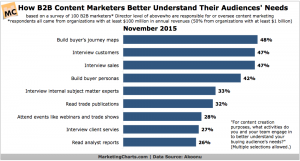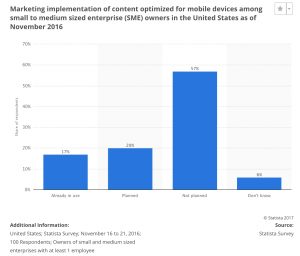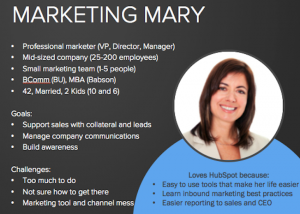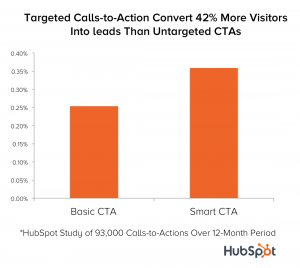
Content marketers write so frequently that sometimes they forget to stop and check out their content analytics, to track what works and what doesn’t.

In 2015, the B2B marketers in this survey reported several different ways that they could "understand their audiences' needs."
These are all fine methods, but why aren't any of them using content analytics to understand their audience via data?
Content writing is about more than just finding the "right subject." Just because a subject is “right” doesn’t always mean the piece will be widely read or shared... or that it will help lead generation.
Therefore, as you create plenty of content, use data as a tool. Use these four content metrics to analyze what's resonating — and then scale up the good stuff.
https://www.ironpaper.com/articles/blog-metrics-to-track-for-inbound-marketing-success/
How long are your posts? Too long that the reader gets bored? Too short that you don’t provide enough information?
The average word count of top-ranking content (in Google) is between 1,140-1,285 words — but your ideal length really depends on your unique audience.
Most importantly: What's right for my specific audience? By answering this question, you can nail down the right length and improve your content's efficacy.
But how? Using your analytics tools and a spreadsheet, list your top 10-20 blog posts. Specifically regard content metrics of traffic and lead conversion. Then, track down the word count for your specific blog posts and look for any trends that emerge.
Finally, ask: Is there similarity in the top-performing posts? This might show a correlation between content length, and what your audience wants to read.
 While most marketers report not having a mobile content strategy in place, producing shorter articles for mobile devices may offer a conversion opportunity that sets you apart from competitors.
While most marketers report not having a mobile content strategy in place, producing shorter articles for mobile devices may offer a conversion opportunity that sets you apart from competitors.
Moreover, if you're writing consistently at one length, you may want to throw several shorter or longer posts in the mix for testing. Then, track if those perform better or worse than your average.
 Refer to your buyer personas for additional clues on which writing style they might prefer.
Refer to your buyer personas for additional clues on which writing style they might prefer.
Which topics are resonating with your audience? If you have an arsenal of content, you can begin to draw out data points on those that are most relevant.
First, make a list of your top-performing posts by conversion rate. Then, add a column to write in the topic of each post. This way, you'll be able to track posts by top-performing subject.
Once you've identified top pieces, analyze them to see if they match your buyer personas. Are you covering topics in your content strategy that match your persona's problems, and provide the right solutions? You may need to revise your personas and/or your content strategy if there is a misalignment.
Additionally, you should ask: Where do these top-performing pieces fall in the buyer's journey? It's important to understand the context around your content. Does the content help:
You should have content pieces to address all of these topics, although your blog posts should do mainly the first and second points.
When a reader finishes your blog, what do you want them to do next? Share it? Email it? Nothing? More than 90% of visitors who read your headline also read your CTA copy, so make it count towards a conversion.
 CTAs are great for conversion — particularly "smart," or targeted, CTAs. Test out CTAs on your content.
CTAs are great for conversion — particularly "smart," or targeted, CTAs. Test out CTAs on your content.
Interestingly enough, company ContentVerve saw a 90% increase in click-through rate by using first-person phrasing: "Start my free 30 day trial" vs. "Start your free 30 day trial."
Reducing clutter around their CTA increased company Open Mile's conversion rate by 232%.
CTAs at the end of content should be clear and enticing. But there are many different ways to write, place, and design the CTA. So test out several types, then keep track of the metrics for click and conversions on your calls-to-action.
When your persona reads a truly relevant and helpful piece of content, they can't help but share it in their circles or act upon it.
So ask: Is my content being shared? Do people link to it or cite the article? Does it influence lead conversions? Are people truly reading it?
To ask these questions, you should measure metrics such as:
Remember to make your social sharing buttons visible. As a post gains traction, it's helpful to include social proof right on the page by showing how many people have already shared the article.
If your gated article is low on conversions, don't instinctually reduce the number of form fields. Instead, increase the perceived value of the offer. That may mean rewriting the content to put the value proposition first and foremost, optimizing the landing page, or recreating the offer.
Companies who blog receive 97% more links to their website.
In order to make sure those clicks are solid, qualified clicks, marketers should continually analyze content metrics and test their work. Especially if your blogs have low conversion, it’s important to see what makes readers abandon the content.
By analyzing data and then mimicking certain factors, you can create a strong impact on readership, engagement, and conversion.
https://www.ironpaper.com/articles/does-web-content-have-an-roi/
Sources:
https://www.stateofinbound.com/
https://blog.hubspot.com/marketing/business-blogging-in-2015
https://unbounce.com/landing-pages/threats-to-your-conversion-rate/
by Jonathan Franchell, CEO of Ironpaper - For more tips and hacks: Need to remove a new line after h1 tags? Both web designers and SEO practitioners need to employ headline tags: H1, H2, H3 in several ways to improve web page structure and tag...

The marketing industry is transforming significantly due to generative AI and increasing market complexity. Gartner's prediction of a 25% decline in traditional search traffic suggests that the era of search engines is dying. AI tools, particularly...

The Crowded Arena of the IT Marketplace Updated December 2024 The Information Technology (IT) landscape is experiencing rapid growth and intensifying competition. IT spending is projected to reach nearly 5.1 trillion U.S. dollars in 2024, a...

Updated December, 2024 The field of digital marketing is evolving rapidly in response to new technology and changing buyer expectations. To help career-minded marketers, we’ve rounded up the top 10 skills needed to succeed in the field. These are...
